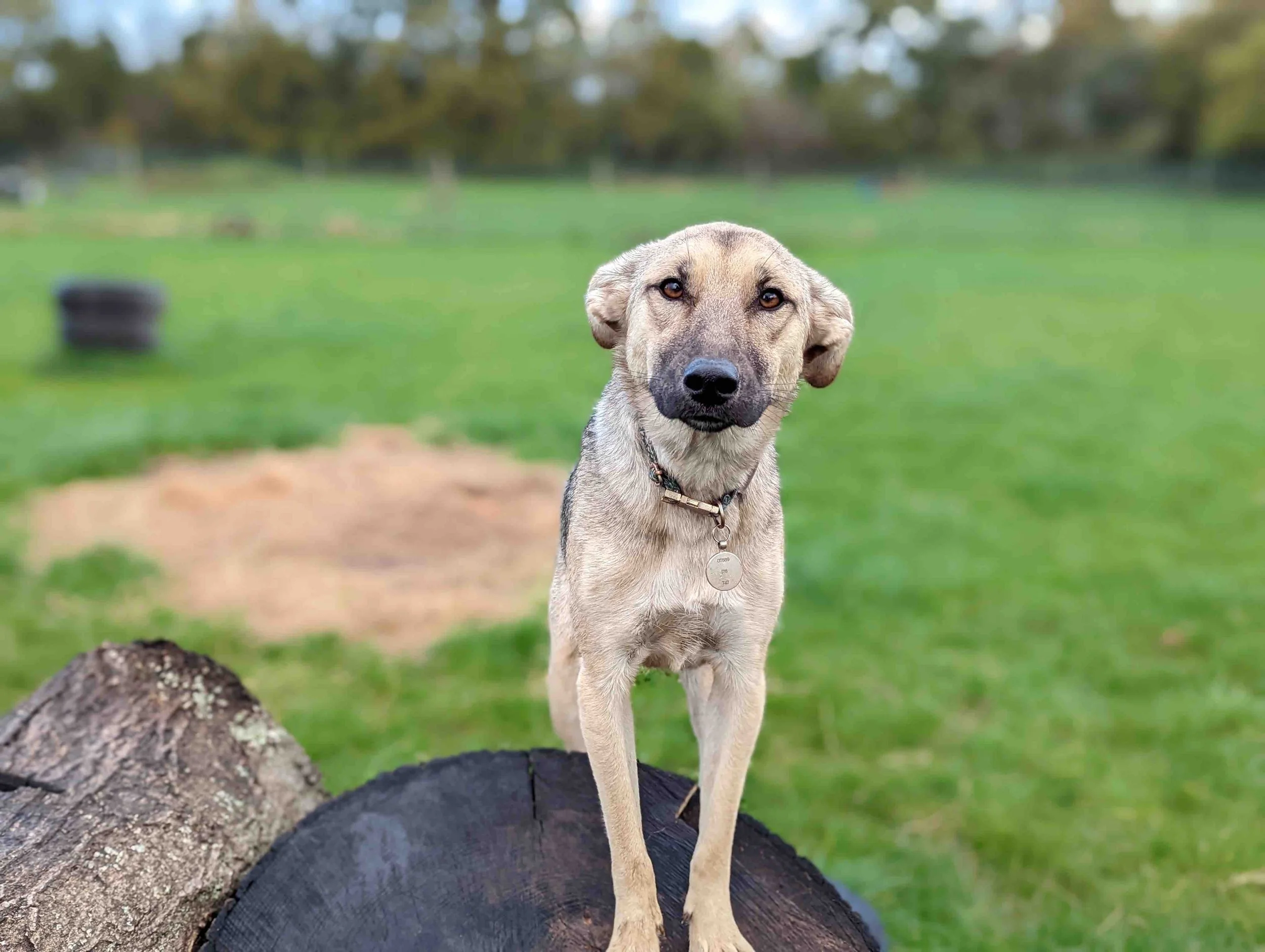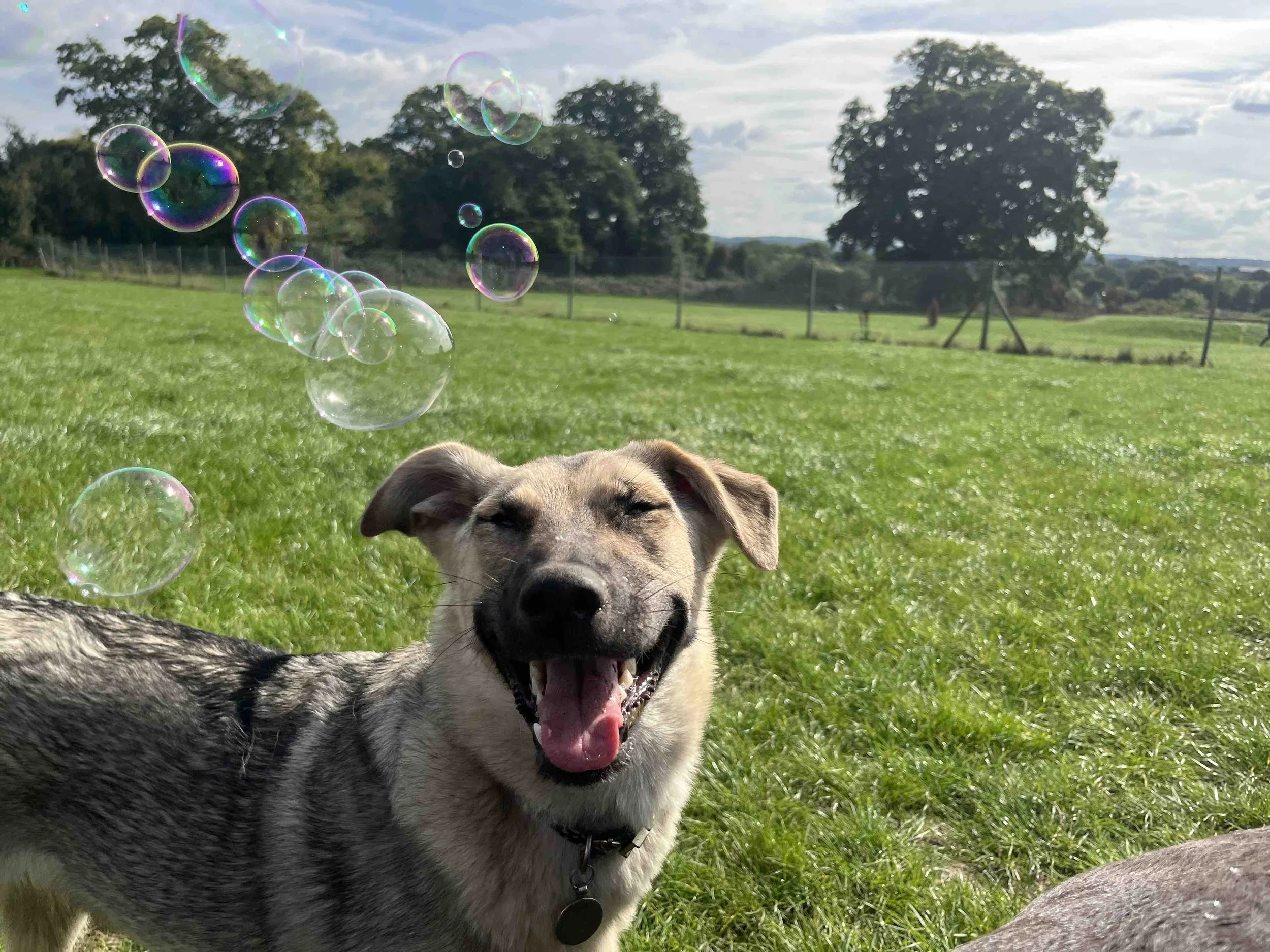My dog, the start-up
This is Jessica Fletcher. She’s a two year old Romanian street dog, and she’s currently chewing her foot on my sofa.
I walk Jess every morning and habitually do this without listening to anything. I do this for two reasons: 1. My dog is an unpredictable ass, and you need all your senses. 2. Mindfulness. I rarely do anything without a podcast or music blasting directly into my earholes, and the hour in the morning I spend milling around one of the parks in my area gives me time to think, create and consider things.
Last week, I thought about nothing in particular when it struck me: my dog is like a start-up. Frustrating, a real pain in the arse, but totally worth it. Here are nine tenuous ways my dog is like a start-up and a couple of really cute pictures for your enjoyment.
1. Having a great CAC is irrelevant when your COGS is super high.
My dog had a super low cost of acquisition; she’s a rescue, and the donation we made to the charity was significantly lower than the thousands of pounds people in my local park have been spending on their “doodles”. I was smug about this, really smug.
Until we needed to see a behaviourist and two dog trainers. Sure, most dog owners have the same outgoings, fancy food, treats, pedicures, and daycare… but let me tell you, if you have an anxious dog whose default response to anything remotely scary is ATTACK, you’re going to be shelling out for a lot of professional help. She is, of course, worth it.
I’ve known founders who are super smug about their low cost of acquisition, but they’re not genuinely appreciating their cost of goods sold. If my dog really were a start-up, I’d be sinking most of my profits into training and treats made out of yak milk, which would hamper my ability to scale.
If you know how much you spend on acquiring customers but not how much it costs you to keep them happy, you’re not scaling as efficiently as you should be. Equally, if you’re in the “sell anything” phase, you’re probably not considering how much time and effort (and distraction) it costs to build everything you’re selling. We’ve all been there, but professional services projects, or worse, selling PS as “features on demand”, are stopping you focussing on what matters, and it’s eating all your funding.
2. Consistency with the one thing you care about most is the only thing that matters.
When your dog considers children on scooters a threat, you only have one option. Focus on desensitising her reactivity towards children. Otherwise, this is going to end very badly.
Focus on the priority, always. Be uncomfortably narrow in your focus, and remove all of the distractions. You can spend your time building multiple paths to market, numerous stories and personas for various buyers and buying journeys, and even building all of your operational processes ahead of time, but it’s a waste of time.
Focus only on the wildly important; the rest will follow.
3. You can have the best pitch in the world; it means nothing without value (cheese)
I’m a persuasive person, I’d like to think. Turns out, the only way to persuade my dog to come the f*ck back is through the medium of cheese. Only cheese. Other things will simply not cut it.
I could write a bloody lovely pitch deck for my dog about the importance of her coming the f*ck back, how important it is for her safety and the safety of those around her. How she’ll never be an off-lead dog if we can’t trust her to return and how much more fun she’d have in the park if we could just trust her to come the f*ck back.
Wouldn’t matter unless I was holding a large bag of cheese. Without a solid and provable value proposition, it doesn’t matter how lovely your pitch is; people won’t buy it. Focus on value delivery, always.
4. Being right is less important than being more persuasive.
Related to the above, I’m not going to fight with the dog about how she’s not allowed to scream bloody murder out of the living room window whenever someone with a trolley case goes past. I’m right, she’s wrong. However, just telling her this will have minimal impact, I need to be more persuasive (and cheese-based).
I’ve sat in multiple customer meetings where their strategy was just plain wrong (in my opinion) or, at the very least, sub-optimal. All of my experience gives me the authority to tell you if I think you could be doing something better, but if you don’t agree, you don’t agree. There’s no point in me just telling you that you’re an idiot; there goes our relationship. If your message isn’t getting through to your exec buyer, you need to be more persuasive, not just louder.
Much like shouting back at the dog rarely works, neither does spouting data at executives. Build a better argument.
If my babies were an alternative indie band, this would be their album cover.
5. If something is important to you, you have to show up every day, even when you don’t want to
Consistency is the key. The dog doesn’t understand why something is okay one day and not the next. Consistency over time matters, even when you can’t be arsed.
This is true for going to the gym, building relationships, prospecting anything. If it’s essential, you must show up consistently, and you’ll get there in the end.
6. Forget everything you think you know. Trial and error is what you need in the early days.
In the last two years, I have been outwitted by the dog multiple times. I am not ashamed to tell you one of my specialisations during my degree was Animal Behaviour. Yet here I am, being outwitted by a dog.
You might think you have a perfect plan and that results will come if you execute against it. You’re right; they might, but if you want to understand the problem you’re trying to solve and how to scale your business, you need to experiment. Having a mindset fixed on your expertise and everything you know will stop you from innovating and trying new things. You wanna do something cool? Forget what you know and go and break something.
7. There is no replacement for early socialisation. We need feedback to succeed. It’s easier to get this earlier rather than later.
My dog missed her critical socialisation period, so she doesn’t speak dog very well. She wants to play, but she doesn’t always interpret the behaviours of other dogs correctly. She sees playful pups as threats and wants to chase little guys who are terrified of her. This makes it somewhat challenging to predict her intentions when she spots another dog… bloody animal.
Whilst we can train her to ignore other dogs and respect their boundaries, there is no replacement for that early socialisation. She’ll never have the language skills of a dog that didn’t grow up on the streets.
If you’re building something without soliciting feedback at every stage, you’re missing a trick. It is much harder to inject feedback into a finished product than adapting as you go. If you want to know if the product you’re developing solves your intended problem, socialise it early and thoroughly.
8. Focus on your LTV
My dog is a tricky little bastard, but I love her completely. She’s also made me so much more thankful for the cat and significantly more appreciative of how much of a good boy he is. Seriously, the cat is the love of my life.
Anyway, it’s easy to think in terms of problems and solutions. Here is the problem we’re trying to solve, and here is the thing that will solve it. I have to bribe my dog with biscuits to get her in from the garden. It’s not a solution to the problem, but it works. The lifetime value of this solution is limited; either I continue to bribe her for the rest of our days, or I have to train her. At best, I’m kicking the can down the road; at worst, I’m significantly increasing my biscuit bill.
When thinking about the problems you’re solving, make sure you’re focussing on the Life Time Value of the solution and, therefore, your product. If your problem has a “one and done” solution, scaling will be complicated as your value diminishes over time. People either won’t continue to pay for it, or your scale will rely totally on product development, which can be time-consuming and undoubtedly costly. Ideally, you want a solution to a pervasive problem that is repeatable across multiple customers without too much hassle.
Also, consider simple things which will have an impact on your LTV. If your product is easy to use, people will use it for longer; if it’s stable, they’ll rely on it more. Building loyalty and lifetime value with customers is about innovation and building cool new things. It’s also about showing up, doing what you say you’ll do, being reliable and just actually working.
9. If in doubt, cheese
Always cheese.
It certainly worked for us in the early days of Localz, sitting in the office eating baguettes and Boursin.
Know what makes you tick; know what makes it worthwhile. Scaling a start-up is a hell of a lot of fun, but it’s also one of the most challenging things I have ever done. As you build a team and bring people in, prioritise team culture and things like work/life balance, or you’ll have a recipe for burnout.
If something works, work out how to do it again but better. Work out the rewards for doing the thing, and keep yourself focused and motivated by knowing when to take time off.






